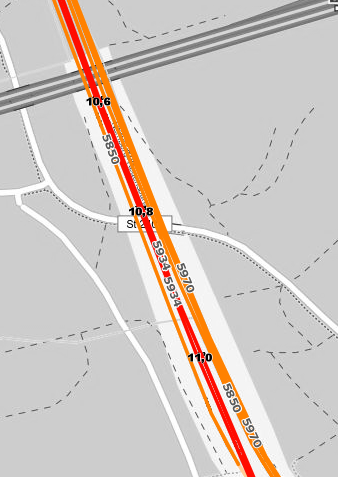Key:railway:position
 |
| Description |
|---|
| The location of railway objects |
| Group: railways |
| Used on these elements |
| Useful combination |
| Status: de facto |
| Tools for this tag |
|
Usage
The tag railway:position=* is used to tag the location of railway objects, along a railway line. The reference system is the so-called distance ribbon; a virtual line along the railway. A ribbon starts at a terminus or junction and ends at such a location as well. The position of an object is then referred to as 'the distance along the ribbon, to the start of the ribbon'.
As described, the tag is used to tag the location of railway objects. They come in a wide variety: think of turnouts, signals and bridges for example. At the track, is often displayed by milestones / kilometre signs.
Values
Rounded number displayed on the sign, pole or catenary mast. Mostly, this is the number, a decimal point, and then the first digit of the lower number.
Negative values are permitted.
The default unit is kilometers. If using miles, prefix the number with mi:. If using poste kilométrico (used in Argentina, see ES:Argentina/Ferrocarriles#Puntos kilométricos), prefix the number with pkm:.
Examples:
12.3: Position 12.3 kilometersmi:47.7: Position 47.7 milespkm:9/15: Poste kilométrico 9/15
Multiple values on a single object
In places where multiple lines meet, a single object can have many positions in relation to each line. To differentiate between these positions, use the railway:position:<line ref=*> tag.
Example :
railway:position:L12=3.4railway:position:L56=7.8
An object with only one position should be tagged with railway:position=* without also adding the line reference.
See also
railway:position:exact=*- for the exact (non-rounded) position of a railway element.
